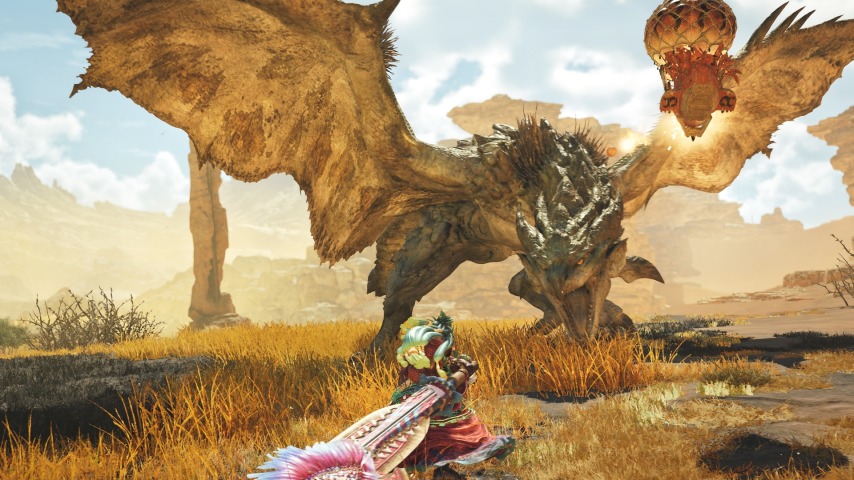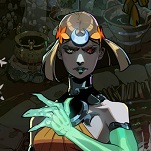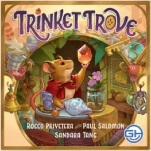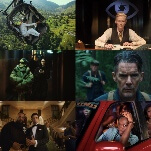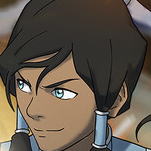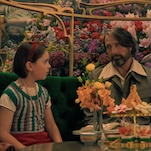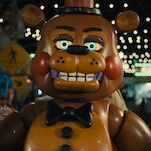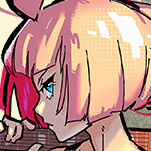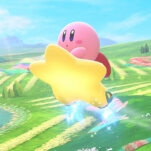There’s something very funny about the fact that the story for Capcom’s latest Monster Hunter game, Wilds, qualifies as genuinely groundbreaking simply because it contains characters who disagree with each other. Every franchise as long as Capcom’s series of throwdowns with big, beautiful beasties comes in for a fair amount of curve-grading, as we ask ourselves “What’s fundamentally different about this big shiny new thing, when compared to that very similar big shiny new thing from three years ago?” But Monster Hunter has been so glacial in terms of its narrative catching up with not just industry trends, but basic beats of human storytelling, that the presence of even momentary conflict in its writing represents big baby steps for the franchise as a whole.
Of course, you could argue (accurately) that Monster Hunter‘s stories have always been vestigial, with most of the “game” taking place after credits have rolled on its narrative, and players devoting the dragon’s share of their time to hunting increasingly nasty variations on its animalistic abominations so they can turn their organs into fashionable gloves. But, as with the franchise’s two other major installments since moving from mobile systems back to home consoles—2018’s Monster Hunter: World and 2021’s Monster Hunter: Rise—Wilds also devotes tons of energy to that story, even (shock of shocks) giving some of its characters actual traits and motivations. The resulting story isn’t good mind you, at least not when compared to basically any video game narrative of even passing worth: It’s a straightforward tale of environmentalism and ecology, laced with the series’ usual colonial overtones—your heroes import the idea of weapons to the naïve populace they encounter in the “Forbidden Lands,” who have apparently never considered “Hit it with something heavy” as a response to animal aggression—and the endless need to provide justifications for your player character to murder hundreds of giant, beautiful beasts for “their own good.” It would be harder to find fainter praise to damn something with than “pretty good story, for a Monster Hunter game,” but that’s where Wilds‘ narrative lives.
The game has more unqualified success, unsurprisingly, when it comes to the monsters themselves, who have always outshone the franchise’s various human ciphers and their talking cats. Wilds‘ single best trait is its willingness to restore some of the horror and grandeur to its menagerie, swerving away from the very fun, but inarguably more cartoonish, designs of Rise. That includes a much-needed movement away from just tossing five new kinds of dragons at the player, with the game’s adoption of invertebrates—bugs, spiders, and, most beautifully, cephalopods—adding very necessary contrast to its high-impact petting zoo. Wilds is the first Monster Hunter game in a minute to make its monsters genuinely scary, partially justifying the existence of the weirdly bureaucratic Guild that hunts them: When packs of rampaging, heavily scarred bears are tearing through villages, or a rose-assed spider is carefully paralyzing human prey for later consumption, the idea of armed weirdos running around with swords, guns, and bug-lances to cull them back into submission makes a little more sense. Wilds has one of the best initial monster sets of any MH game in years, and seeing the next strange Leviathan to come wriggling up out of a hole is the best reason to keep playing the game in its early going.
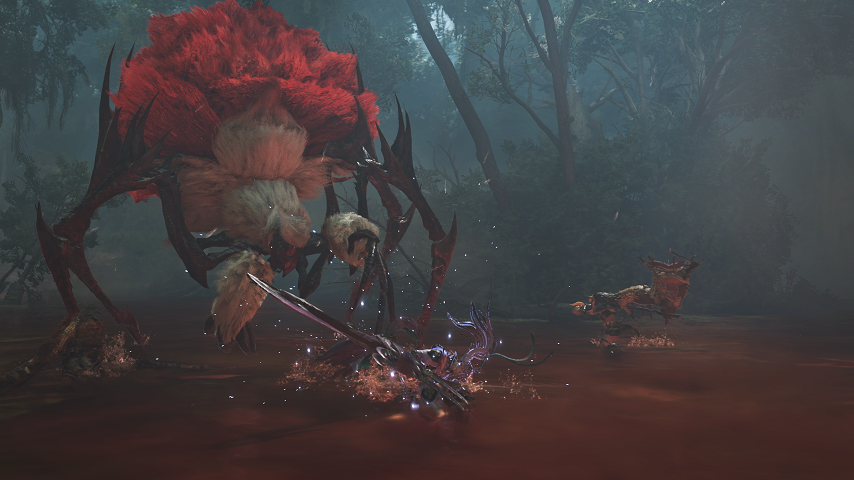
As to that play: Wilds represents an ongoing effort to simplify the franchise in both terms of its combat, and the much-needed preparation that supports it—and may have finally hit the point where the needle has swung too far in the opposite direction from previous games’ strangely layered nest of obscurities. Monster Hunter has always walked a tightrope between “meticulous” and “tedious,” requiring players to eat meals, plan equipment, and carefully track monsters to eke the most survivability out of fights. Ever since World (which radically transformed the games by changing their maps from discrete “rooms” to big, sprawling environments), Capcom has been steadily whittling down this overhead, implementing quality-of-life features that have sometimes gotten rid of genuine roadblocks to fun—Wilds has the best item menu the games have ever featured, allowing you to cut down on frenetic scrolling for potions in the middle of a fight—but also some of the thought that gives the franchise its more contemplative rhythms. No more navigating or negotiating with the environment here: Just hop on your non-union-equivalent Chocobo, check your phone while it runs, and find yourself deposited at the next boss battle in a minute or two. The game’s story mode supports this aggressive uptick in pacing, eschewing the series’ classic “Start from your base, eat a meal, go on the hunt” routine in favor of throwing you at fight after fight with only the occasional breather in between.
The fights themselves similarly feel familiar, but faster, tasking players once again with wielding one of the game’s 14 weapon types and slowly building up mastery with how it plays. (My own trip through the game split time between the high-flying Insect Glaive, which allows players to launch themselves into the sky, and the slow, steady satisfaction of massive Hammer blows—the double-focus aided by the new ability to switch between two weapons while out on the hunt.) The biggest addition to combat is a new “wounding” system: Repeated strikes on one part of a monster’s body open up glowing red weak points that can then be taken down with carefully aimed strikes, generating openings for attacks, new resources for weapons, and always-needed monster parts. The focus on wounds has a tightening effect on the hunt: You spend less time observing your quarry, watching for tells for their next big attack, then you do laser-focused on that leg that you know is about to blossom into sweet, beautiful blood. The net result is to make the title feel much easier, and more game-y, than previous installments: When it’s this easy to get a reaction out of your foes, those big triumphant moments when you land a life-saving stun on a rampaging beast feel much less satisfying. The fights still go down smooth as you chase wound-pop after delicious wound-pop. But that lack of texture isn’t always to the game’s strength: Especially with the other alterations to pacing (the rapid-fire progress through the story also reduces, at least early on, the need to craft new gear sets, a core part of the Hunter appeal), Wilds can sometimes feel like you’re chugging down fight after fight instead of savoring each battle. People have spent years asking “Why doesn’t Monster Hunter ditch all the slow, irritating bits that seem baked into its premise?” and Wilds feels like it’s aiming to answer that question in a way that clarifies why the grit was so important.
When reviewing an installment of a long-running franchise like this, a writer is always aiming for two different audiences. To the newcomers, Wilds could, indeed, be the fabled “One that gets you into Monster Hunter“: Its slick presentation and smooth fights get rid of many of the franchise’s more eyeroll-inducing choices, and the lack of those important frictions will be harder to notice. For veterans, it’s a much more complicated package. The game has never looked “better,” but only in a “very expensive” definition of the word. Its opening environments, which are muted and lifeless, eventually give way to more lurid hues, but the aesthetic realism that makes its monsters so fascinating never plays as well when it’s applied to deserts, forests, and caves. (Wilds is, in many ways, a direct sequel to World, so it’s not surprising that the game dropped much of the amazing verticality and freedom to explore that characterized Rise; still, the loss of some of that game’s climbing and maneuvering ideas is sorely missed.)
Don’t get me wrong: As a long-time player of the franchise who’s already put 70 hours in for this review, I’m firmly in the grip of the addiction. I’ll be playing this thing for at least another month or two, getting every ounce of meat off its bone as I perfect my weapon sets and maximize my fit. (I’ll leave more in-depth sartorial analysis to the fashionistas, but the armor looks are generally strong, if not as out-there as some of World‘s outfits.) But I can’t help but feel a little dissatisfied at how easily Wilds has set me up for the binge. Many of its changes to long-standing franchise tradition are initially, and genuinely, thrilling: The first two dozen times you land a wound strike, it feels great. But the worst thing I can say about these changes is that, taken as an aggregate, they serve to rob the monsters of some of the glory that the game’s art designers have done such amazing work to re-instill in them: Transforming gorgeous creatures into a rote series of hitboxes and weak points for easy disassembly. The best Monster Hunter games have taken the “hunter” side of that titular equation seriously. Monster Hunter: Wilds, by contrast, is more like an extremely slick action game than a celebration of the hunt. Its storytelling has taken an undeniable step forward, but its play—where this franchise has always lived or died—has lost some of that all-important spirit.
